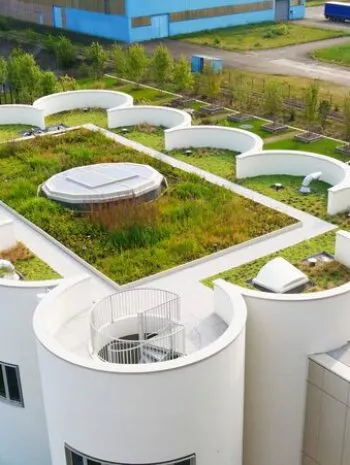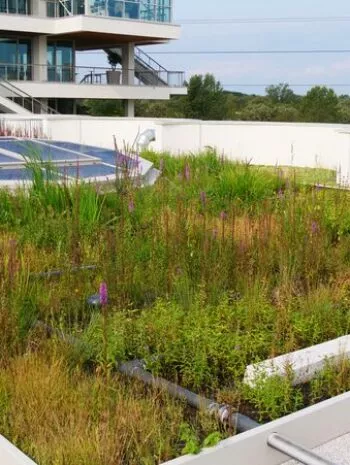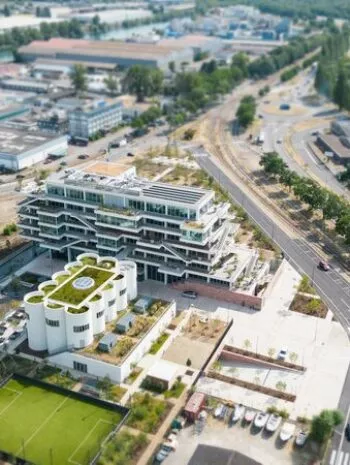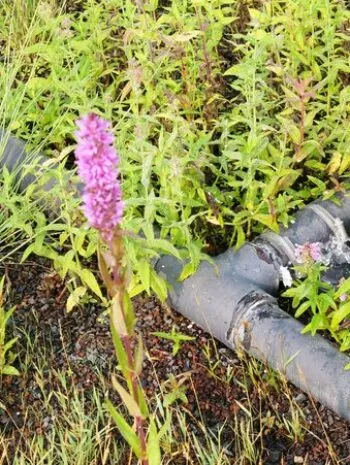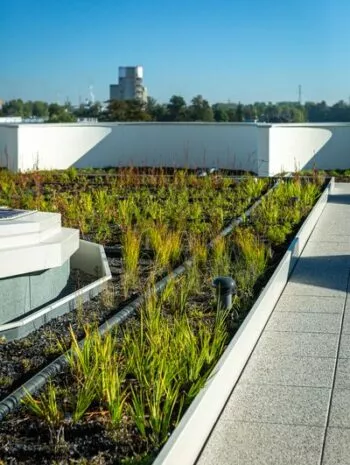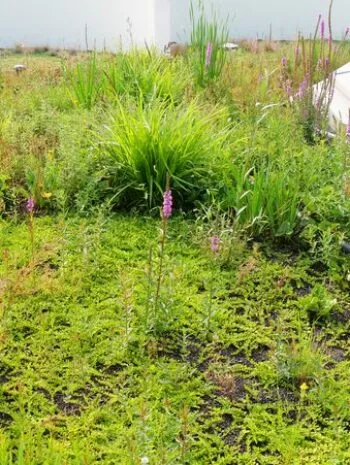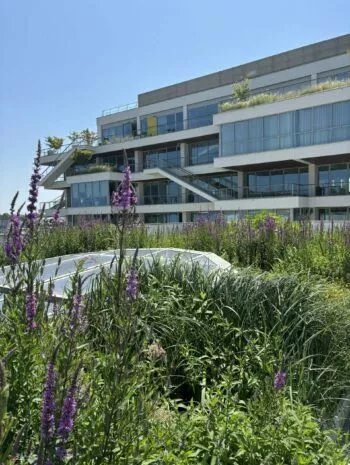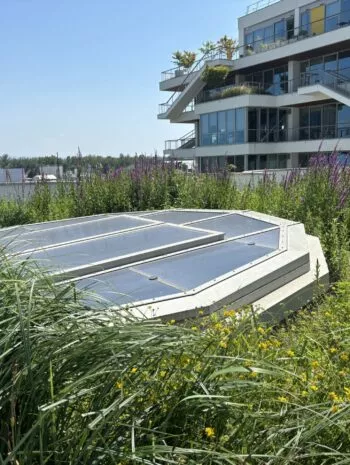Skywater Clear
The first vegetated roof system for the treatment and reuse of wastewater for buildings.
It was only natural that Soprema and Aquatiris should meet and decide to collaborate on experimenting with and co-developing a new solution in the field of sanitation and the reuse of treated wastewater.
The solution developed is based on phyto-purification. But this has the particularity of being installed on the roof of a building, unlike the traditional process which takes place entirely at ground level.
How Skywater Clear works
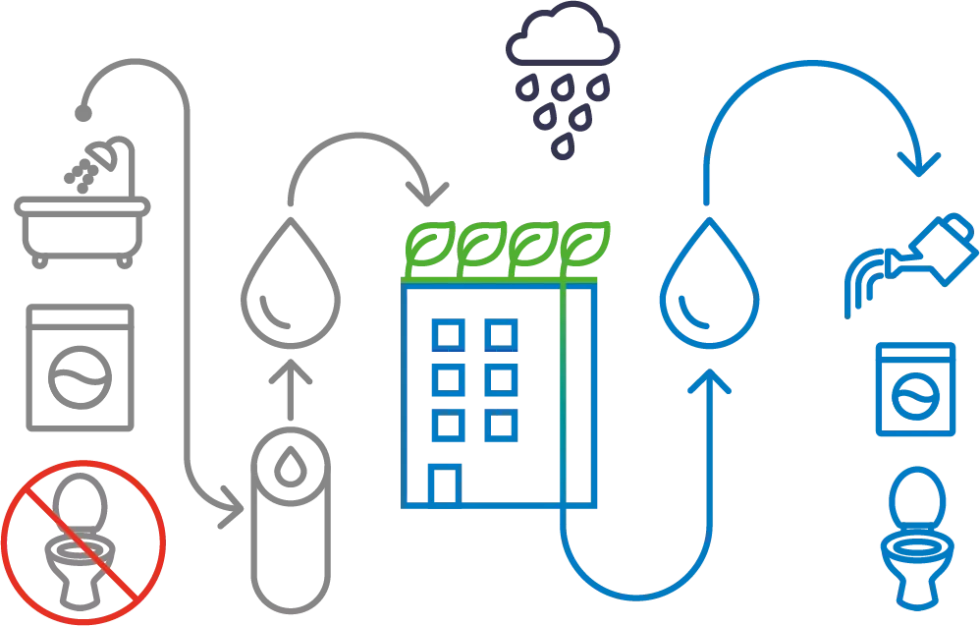
Each type of grey water (kitchen, sink, washbasin, shower) produced in the building is collected in a separate network.
An initial wastewater pre-treatment stage takes place in a technical room in the basement of the building. The grey water arrives there by gravity.
The pre-treatment is divided into two stages:
- Screening: the phase of separating solids and liquids. The solids are directed to the mains drainage system and the liquids to the other Skywater Clear treatment stages.
- Filtration using bio-based materials: the liquids are percolated vertically through a filter medium to remove residual suspended matter and fats.
The pre-treated grey water is then transferred to the roof via a lifting station where a pump sends it to the roof.
On the roof, the water is dispersed over a planted filter by sprinkler systems.
The water percolates vertically into a filtering bed specially developed for installation on roofs (a mixture of light, porous materials, only 20cm thick). This bed is composed of different plants adapted to the roofing conditions and water treatment. In the planted filter, the water is in contact with micro-organisms present in the bed and, in particular, around the roots of the plants which act as purifying agents by breaking down the pollution. A solenoid valve controls the contact time between the water and the filtering bed, by controlling the partial or total emptying of the planted filter and directing the treated water to the post-treatment stage.
In this last stage, the treated water on the roof flows by gravity into the technical room located in the basement of the building where it is disinfected and filtered.
This water feeds the flush cisterns of the entire building, thus avoiding the use of drinking water. It can also be used for watering vegetated roofs or green spaces.
The reuse of treated wastewater (REUSE): an opportunity in the face of climate change
The Skywater Clear system has been designed for the collection and reuse of water in situ without transport. In addition to reducing the impact of the building on its environment by reducing the use of drinking water, this innovative solution enables:
- Air cooling: evapotranspiration and plants create water vapour that cools the air, helping to combat heat islands in urban areas;
- The introduction of more vegetation into the city and the improvement of the landscape;
- The protection and welcoming of biodiversity thanks to some thirty species of plants used in this system. An environment that we are no longer used to seeing in the city is thus recreated.
